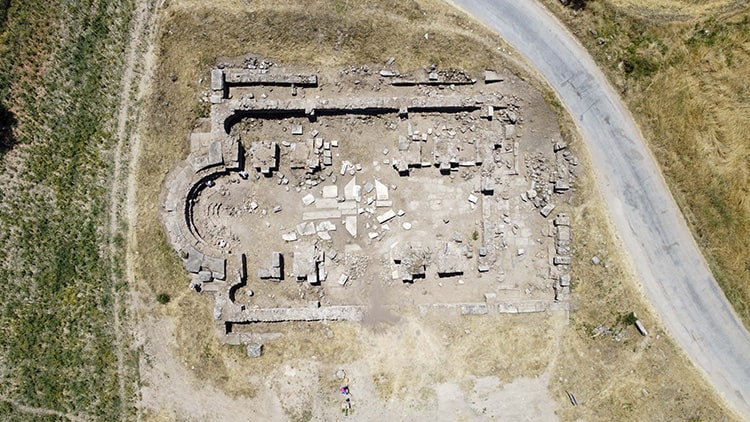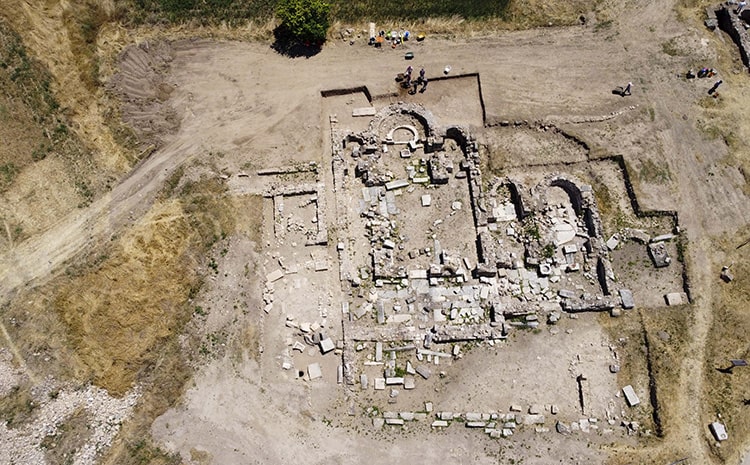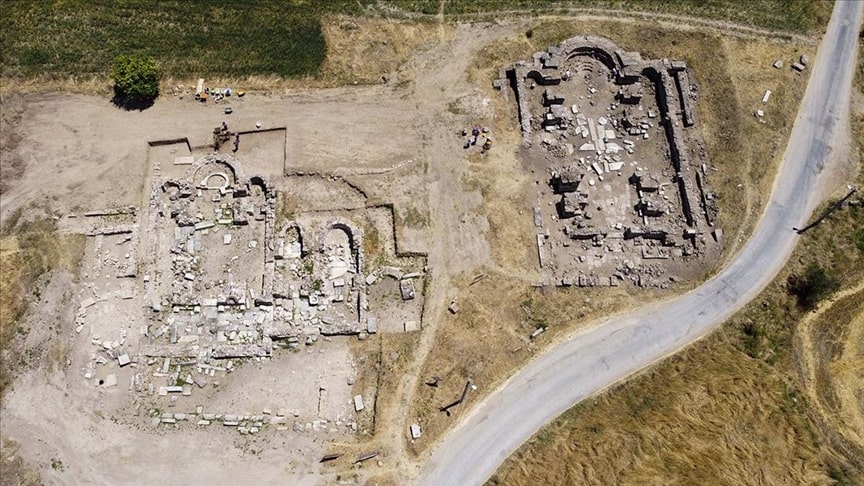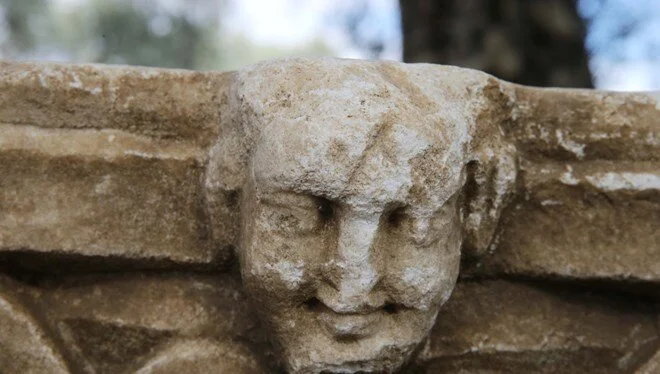In the ongoing excavation works at the ancient city of Sebaste in Uşak, founded by the first Roman emperor Augustus, a granary belonging to the bishopric center of that period was uncovered.
Sebaste Ancient City is located in the town of Selçikler in the western province of Uşak, Turkey.
The archaeological excavations carried out under the presidency of Uşak Archaeology Museum receive scientific support from the faculty members of the Department of Archaeology, Faculty of Arts and Sciences, Uşak University, Assoc. Prof. Dr. Emre Taştemür, and Assoc. Prof. Dr. Münteha Dinç.
Last year, during the excavations at Sebaste, which is among the most important cities of the Roman period in Anatolia and served as a bishopric center, environmental cleaning and some arrangements were carried out in the Great Church and Small Church areas. This year, excavation efforts reached the section believed to be a grain storage area (granarium) dating back to the Eastern Roman Empire period, located to the north of the Small Church.

Doç. Dr. Münteha Dinç, speaking to an AA (Anadolu Agency) reporter, stated that the name “Sebaste” was given to the city during the Roman period. She also mentioned that the ancient city has a history dating back to the Late Neolithic period, with continuous settlement for 7,000 years. During the Hellenistic period, it existed as a village settlement.
Dinç pointed out that the city gained its true fame with the connection to the first Roman emperor, Augustus, and stated:

“The renowned Roman emperor Augustus gave this city its name. Later on, Sebaste became a powerful center in the region. The city had a great deal of interest from Roman emperors, and the reason behind it is its strategic location. We are right in the center of roads stretching from north to south and east to west. Sebaste is, in this regard, a crucial trading center. It is also situated at the heart of military routes, serving as a place for accommodation and rest for armies. Therefore, the city has maintained its significance throughout different eras.”
Dinç stated that the two churches in the ancient city are dated to the Eastern Roman Empire period, but their architecture contains remnants from even earlier periods. She also mentioned that the tombstones (funerary stelae) in the region provide significant clues about the city’s history. Funerary stelae are upright, single-block stone structures with their height greater than their width and offer valuable insights into the historical context of the city. These findings are crucial for understanding the historical development and cultural aspects of Sebaste during various periods.

Dinç mentioned that during the excavation works, they reached the remains of a grain storage area in the church. She stated, “We can say that Sebaste continued its grandeur during the Eastern Roman Empire period and transformed into a bishopric center. The grain storage area was actually a storage space, indicating the presence of a living area as well. It is crucial for showing us the living spaces of the priests and arrangements related to their sustenance in this bishopric center.”
On the other hand, Assoc. Prof. Dr. Emre Taştemür mentioned that before the excavation works, they conducted surface surveys in the ancient city for approximately 5 years and achieved significant results.




